How to Add Arabic Language to Windows 10
Z7_3054ICK0KGTE30AQO5O3KA30N0
hp-concentra-wrapper-portlet
![]() Actions
Actions
HP PCs - Changing Languages (Windows 10)
This document is for HP and Compaq computers with Microsoft Windows 10.
The language on an HP computer is part of the product design. For the best computing experience, purchase a computer that matches your primary language. If you already have a computer that does not match your primary language and you cannot find or install a Language Pack, you might be able to install a new full version of Windows that matches your primary language. For more information, visit Microsoft's Local Language Program Web site (in English).
caution:If you change the language and then contact HP Support, HP might not be able to help if the language is different than the language that shipped with the product. The language is part of the product design and HP's support services are set up to match the design of the product.
In Windows 10, you can change the display language for apps, settings, menus, and other areas in Windows. People sharing a computer can each select different display languages for their user accounts, or one person can add multiple languages to one user account and switch between them.
note:Installing multiple language packs might affect how much hard disk space is available, as well as system performance. Install only the language packs you intend to use.
Finding and installing a language pack
Over a hundred languages can be downloaded from the Language settings in Windows. Many of the languages have a number of dialects, which are called regional variants. If you add a language but find that no language pack is available for download, check periodically to see if Microsoft has created a language pack for the language you want.
-
In Windows, search for and open Language settings.
-
On the Time & Language window, select Add a Windows display language in Microsoft Store.
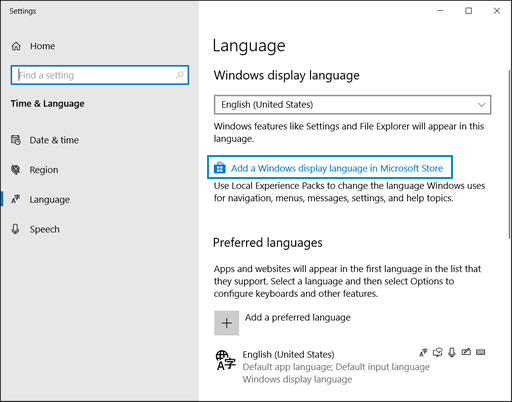
-
On the Local Experience Packs window, scroll through the list to select the language or regional variant you want.

-
On the selected language tile, click Get.

-
On the Install language features screen, select the options you want, and then click Install.
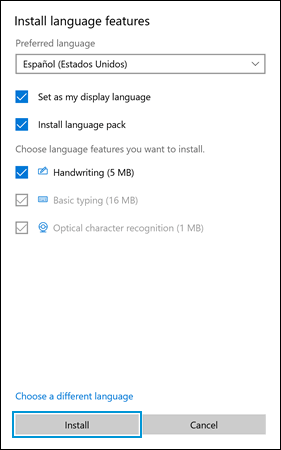
The selected language is now available to use.
Changing the display language
After you download a language pack, you can switch between display languages.
-
Sign in to your account.
note:
Other people using the computer can choose different primary display languages by signing in to their accounts.
-
In Windows, search for and open Language settings.
-
On the Time & Language window, select the language you want from the drop-down menu under Windows display language.

-
Select Yes, sign out now, and then sign in when prompted.
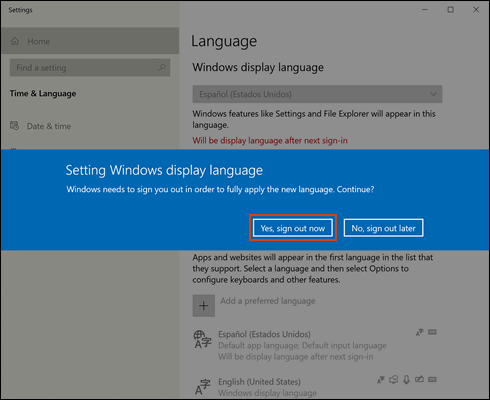
The selected language displays for apps, settings, menus, and other areas of Windows.

-
To return to the previous language or select a new language, repeat the previous steps.
Changing the keyboard language
After a language is on the language list, an appropriate input method is automatically added. You can add input methods in other languages or select a different keyboard layout.
-
In Windows, search for and open Typing settings.
-
On the Devices window, select Typing, and then select Advanced keyboard settings.
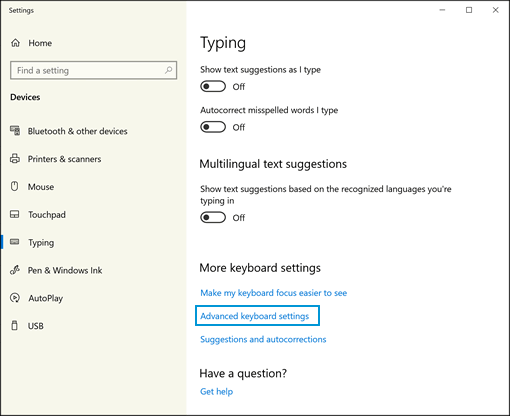
-
On the Advanced keyboard settings window, select the language you want from the drop-down menu under Override default input method.

-
To change the keyboard layout, search for and open Language settings.
-
On the Time & Language window, select a language, and then select Options.

-
Under Keyboards, click Add a keyboard, and then select a keyboard layout from the list.

-
To switch between keyboard layouts, press the Windows
 + SPACE BAR keys.
+ SPACE BAR keys.note:
Switching between keyboards only changes the language of the input. To change the display language for apps, settings, menus, and other areas in Windows, see the Changing the display language section in this document.
-
If you would like each app to utilize a specific keyboard, search for and open Advanced keyboard settings.
-
Under Switching input methods, select Let me use a different input method for each app window.

Applying the display language to more areas
Apply the language you installed to the Welcome screen and other accounts.
-
In Windows, search for and open Language settings.
-
Under Related settings, select Administrative language settings.
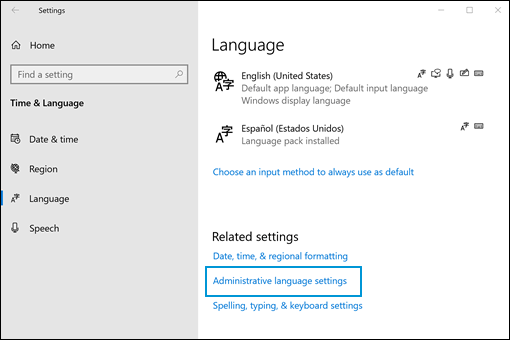
-
On the Region window, select the Administrative tab, and then click Copy settings.
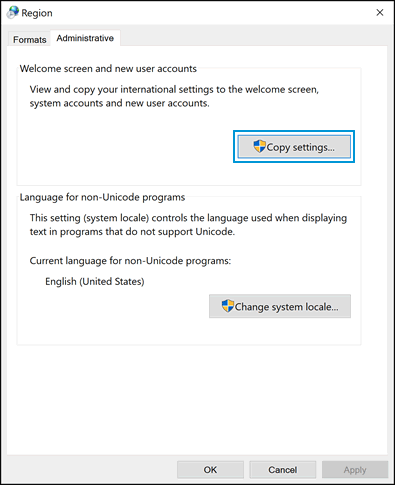
-
Review your current settings, and then select the check box next to Welcome screen and system accounts.
note:
If you also want to apply your display language choice to all new user accounts, select the check box next to New user accounts.
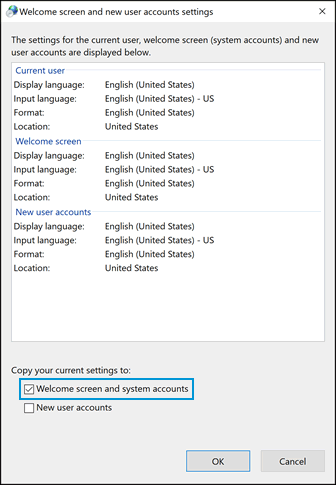
-
Click OK to apply the changes, and then restart your computer if prompted.
Uninstalling language packs
Installing multiple language packs might affect how much hard disk space is available, as well as system performance. Uninstall any language packs you no longer want or need.
-
In Windows, search for and open Language settings.
-
On the Time & Language window, select the language you want to remove under Preferred languages, and then click Remove.
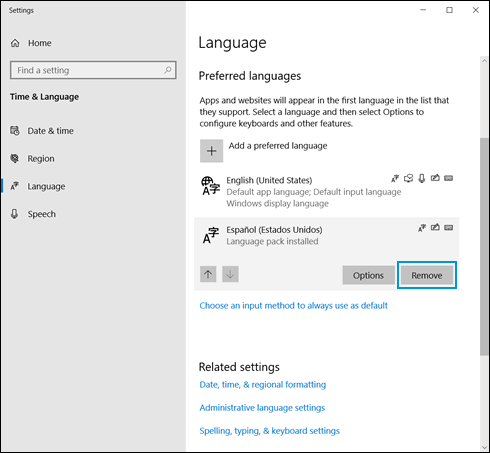
-
If you set the removed language to display on the welcome screen and other accounts, select Administrative language settings.
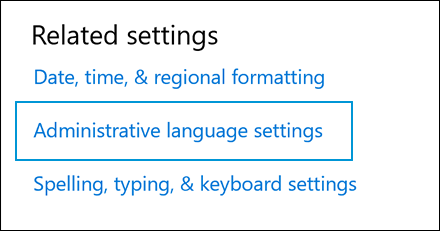
-
Review your current settings, and then clear the box next to Welcome screen and system accounts.
note:
If you also want to uninstall the display language from all new user accounts, clear the box next to New user accounts.

-
Click OK to apply the changes, and then restart your computer if prompted.
The language and all associated input methods are now removed from the user account.
How to Add Arabic Language to Windows 10
Source: https://support.hp.com/us-en/document/c04769561